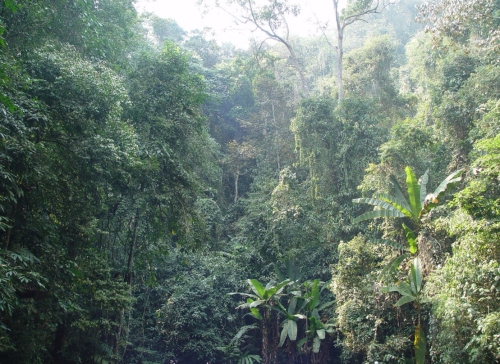A better understanding of terrestrial flux dynamics will come from elucidating the integrated effects of climate and vegetation constraints on gross primary productivity (GPP), ecosystem respiration (ER), and net ecosystem productivity (NEP), according to Dr. CHEN Shutao, Associate professor at Nanjing University of Information Science and Technology.
Dr. CHEN and his team--a group of researchers from the Jiangsu Key Laboratory of Agricultural Meteorology/School of Applied Meteorology of Nanjing University of Information Science and Technology, College of Resources and Environmental Sciences of Nanjing Agricultural University and Climate Center of Anhui Weather Bureau, China--have had their findings published in Advances in Atmospheric Sciences (AAS), a journal hosted by Institute of Atmospheric Physics, Chinese Academy of Sciences.

The cover art, reproduced from a global map of eddy covariance tower sites, shows carbon cycle processes and indicates the influence of temperature, precipitation and vegetation on terrestrial carbon assimilation and emissions. (Image by AAS)
"The terrestrial carbon cycle plays an important role in global climate change, but the vegetation and environmental drivers of carbon fluxes are poorly understood. Many more data on carbon cycling and vegetation characteristics in various biomes (e.g., forest, grassland, wetland) make it possible to investigate the vegetation drivers of terrestrial carbon fluxes," says CHEN.

A photo of rainforest with a positive net carbon assimilation rate in Xishuangbanna, China (Image by CHEN Shutao).
"We established a global dataset with 1194 available data across site-years including GPP, ER, NEP, and relevant environmental factors to investigate the variability in GPP, ER and NEP, as well as their covariability with climate and vegetation drivers. The results indicated that both GPP and ER increased exponentially with the increase in MAT [mean annual temperature] for all biomes. Besides MAT, AP [annual precipitation] had a strong correlation with GPP (or ER) for non-wetland biomes. Maximum LAI [leaf area index] was an important factor determining carbon fluxes for all biomes. The variations in both GPP and ER were also associated with variations in vegetation characteristics," states CHEN.
"The model including MAT, AP and LAI explained 53% of the annual GPP variations and 48% of the annual ER variations across all biomes. The model based on MAT and LAI explained 91% of the annual GPP variations and 93% of the annual ER variations for the wetland sites. The effects of LAI on GPP, ER or NEP highlighted that canopy-level measurement is critical for accurately estimating ecosystem–atmosphere exchange of carbon dioxide."
"This synthesis study highlights that the responses of ecosystem–atmosphere exchange of CO2 to climate and vegetation variations are complex, which poses great challenges to models seeking to represent terrestrial ecosystem responses to climatic variation," he adds.
Reference
Chen, S. T., J. W. Zou, Z. H. Hu, and Y. Y. Lu, 2019: Climate and vegetation drivers of terrestrial carbon fluxes: A global data synthesis. Adv. Atmos. Sci., 36(7), https://doi.org/10.1007/s00376-019-8194-y.
Media contact: Ms. LIN Zheng, jennylin@mail.iap.ac.cn
